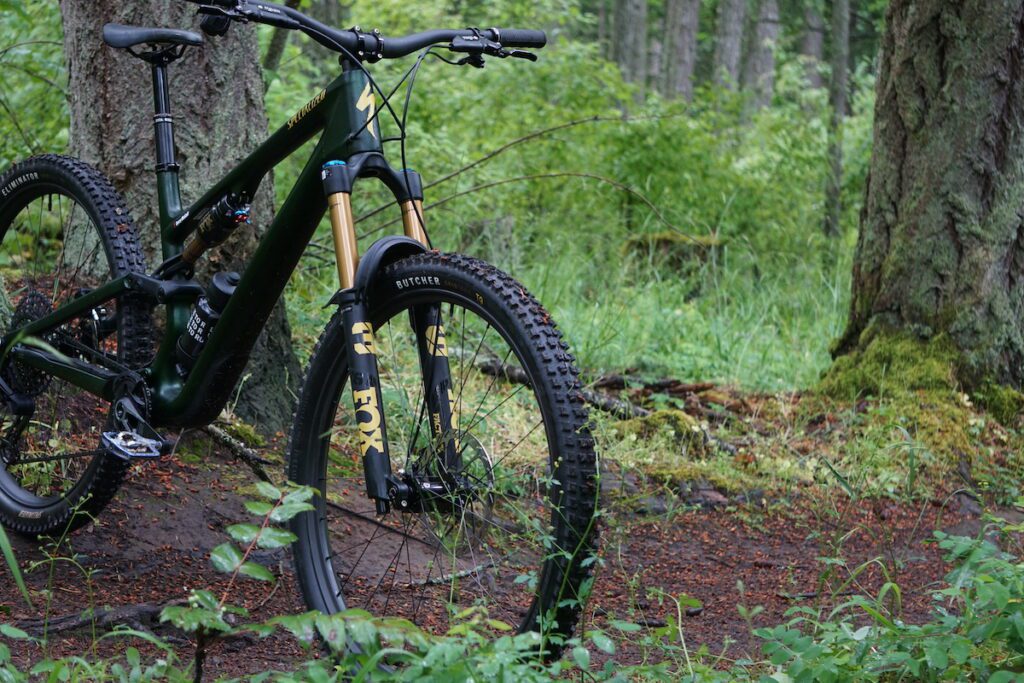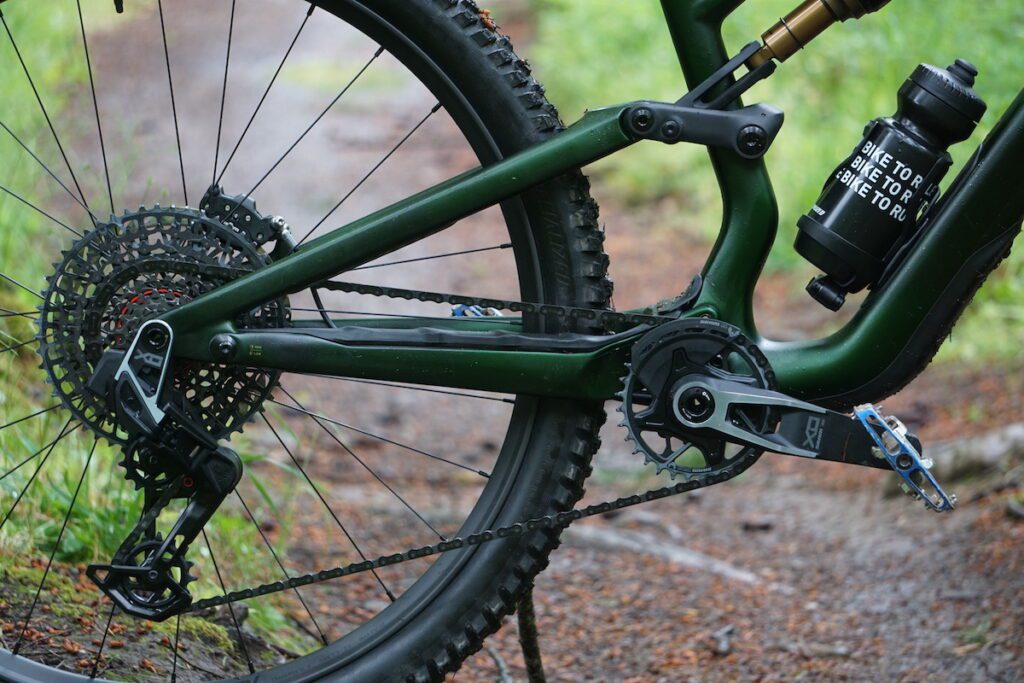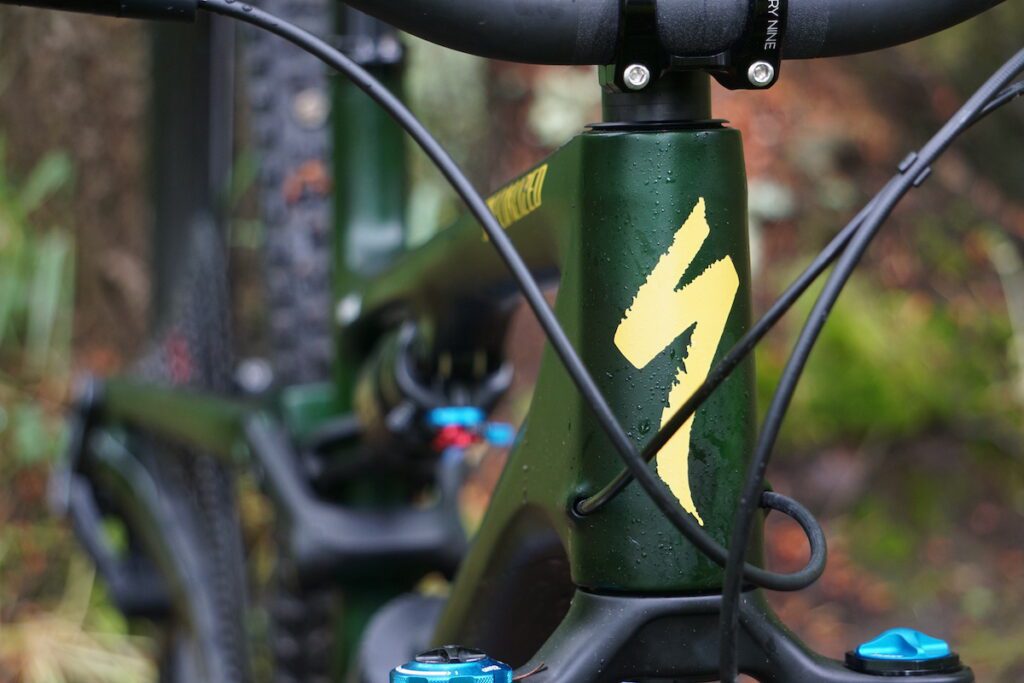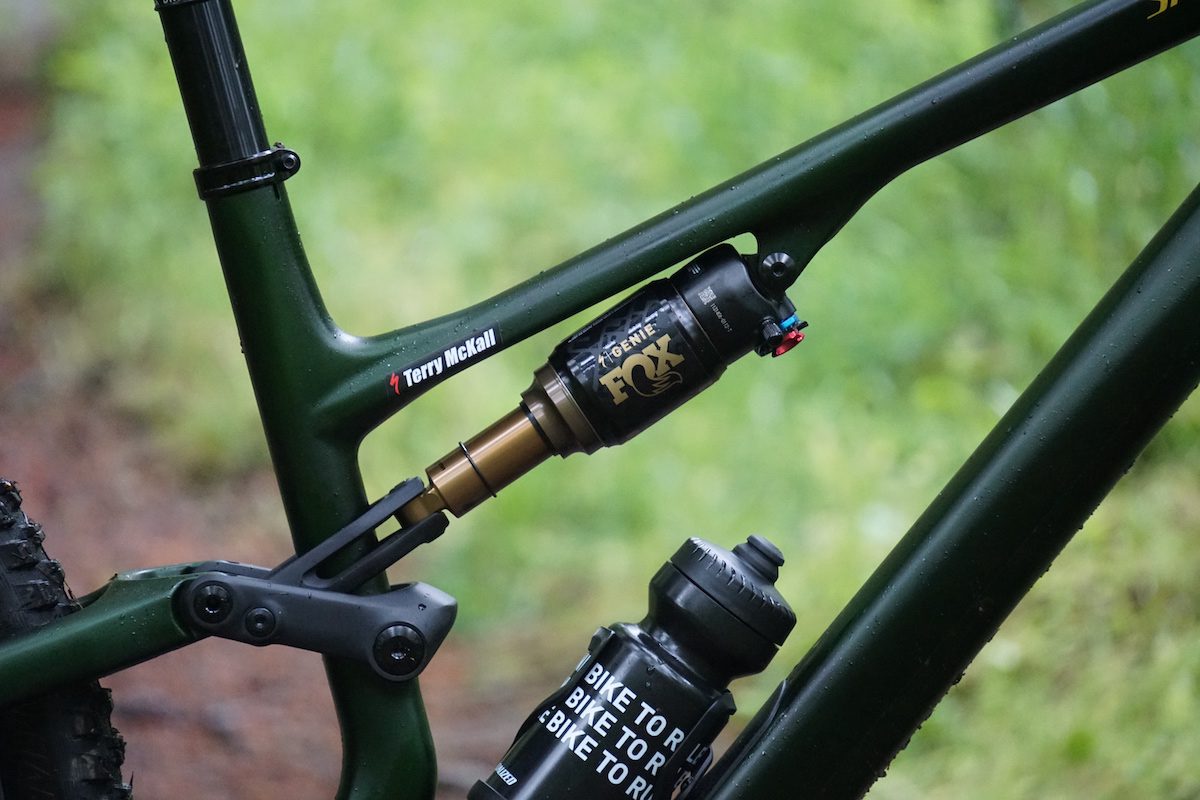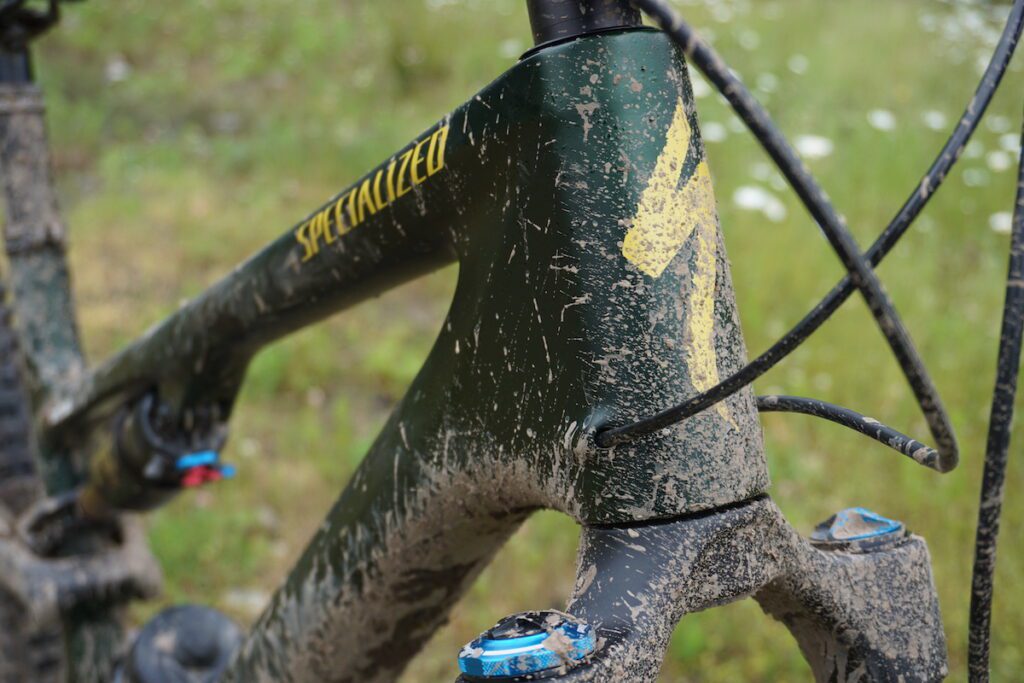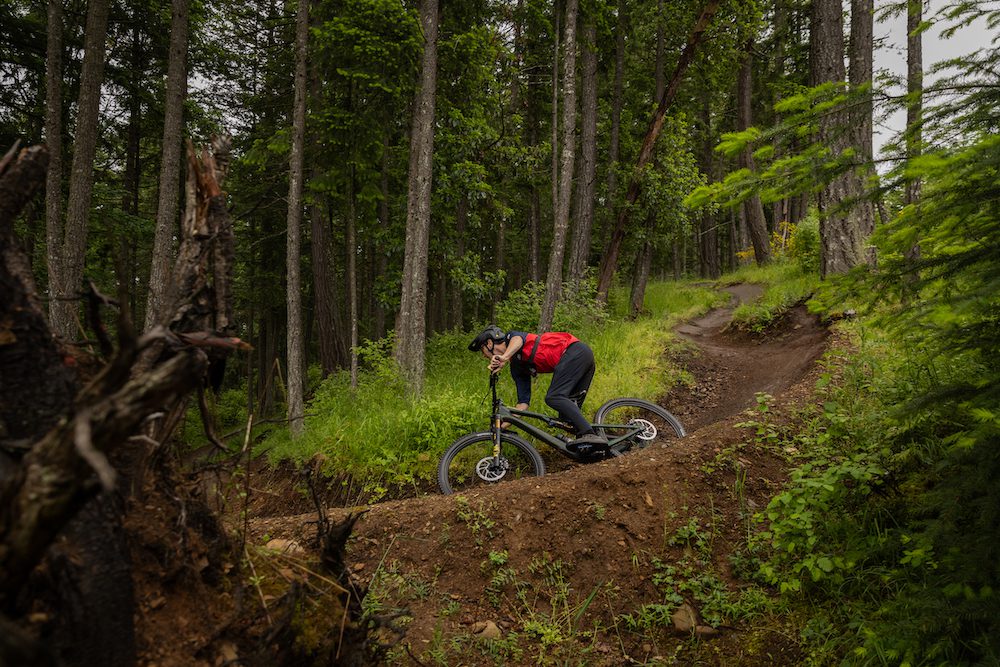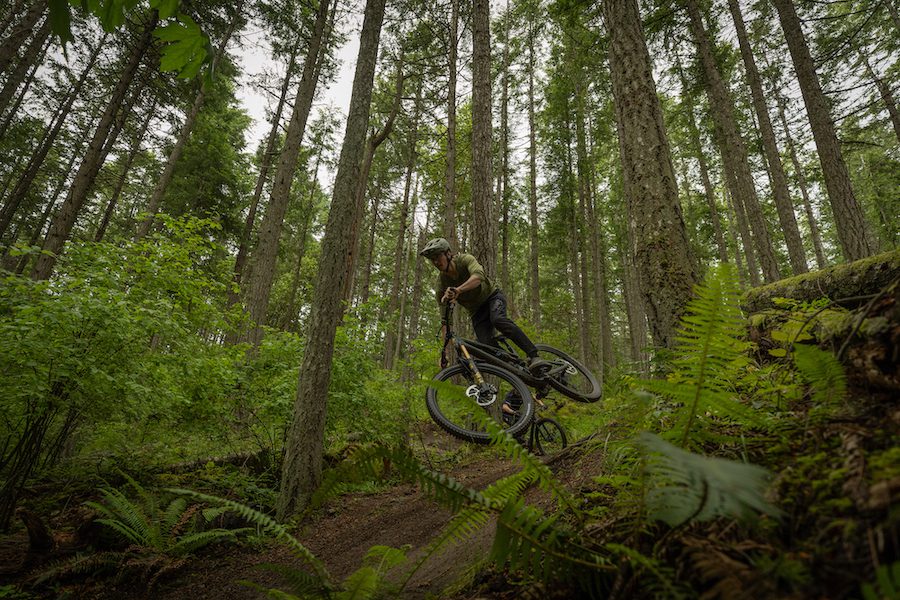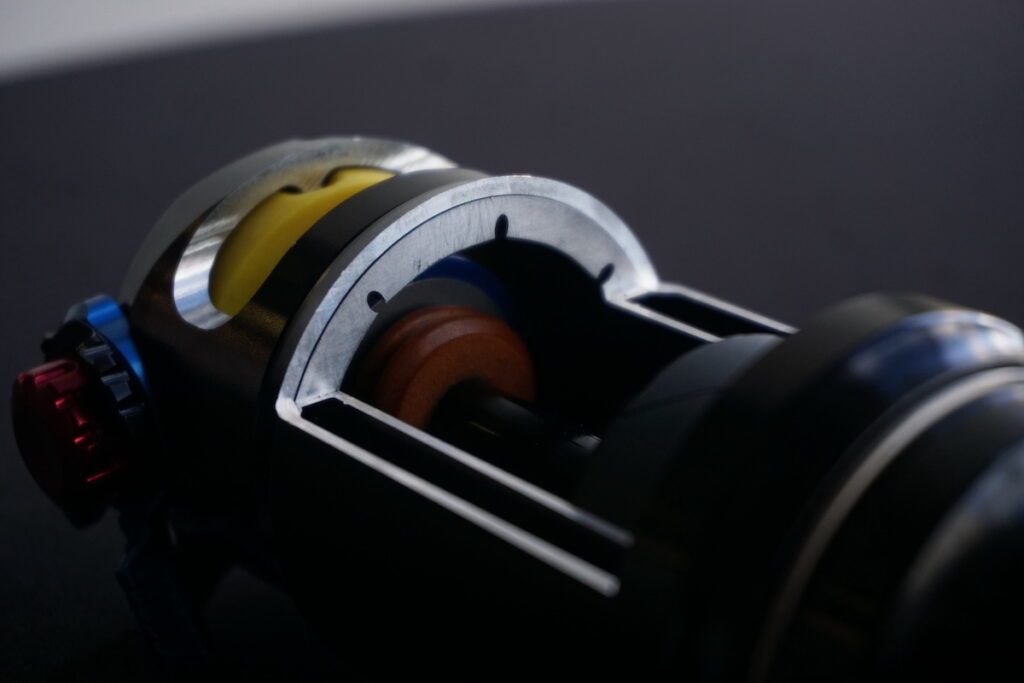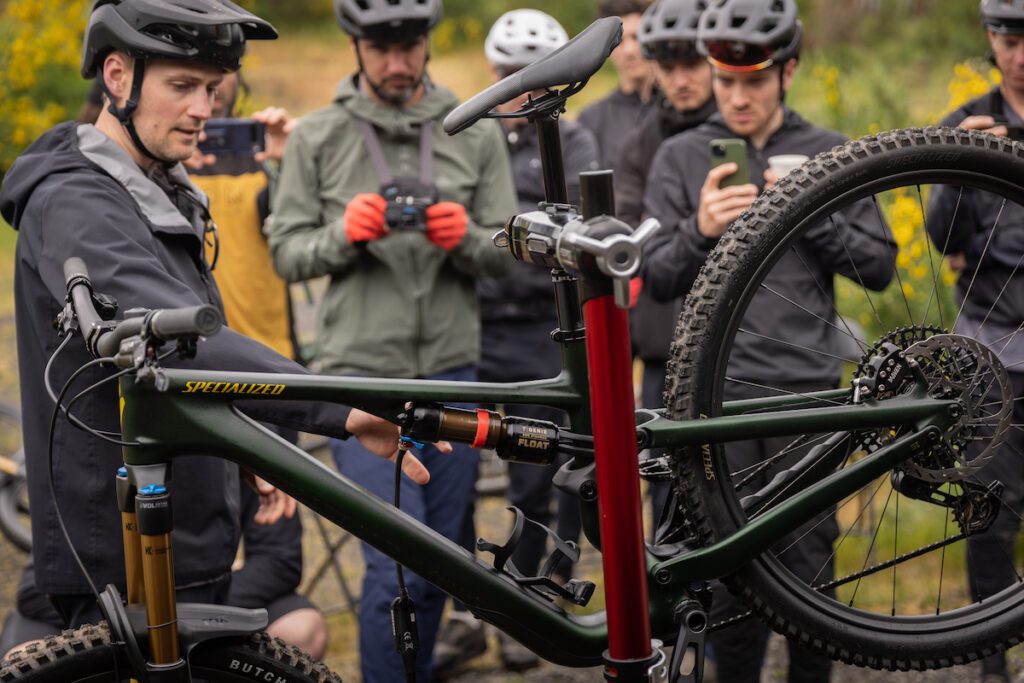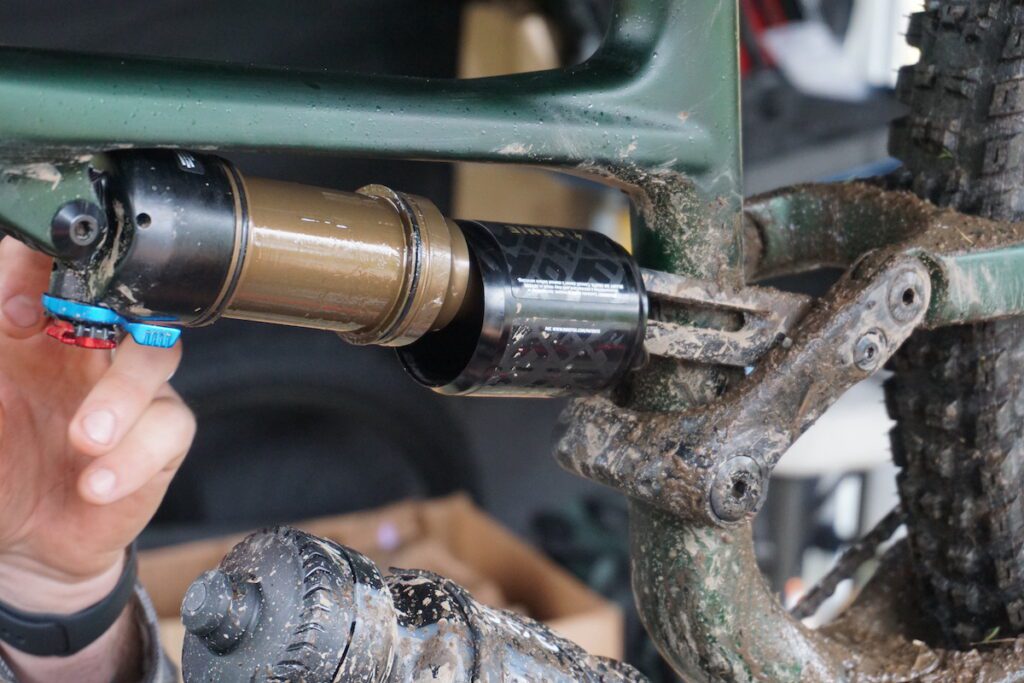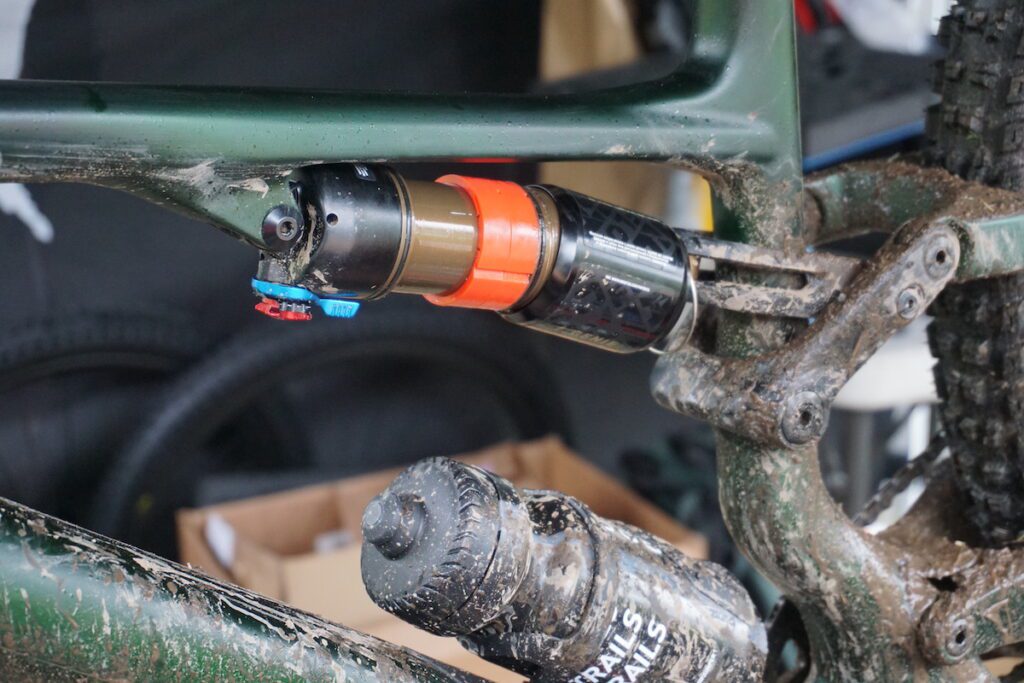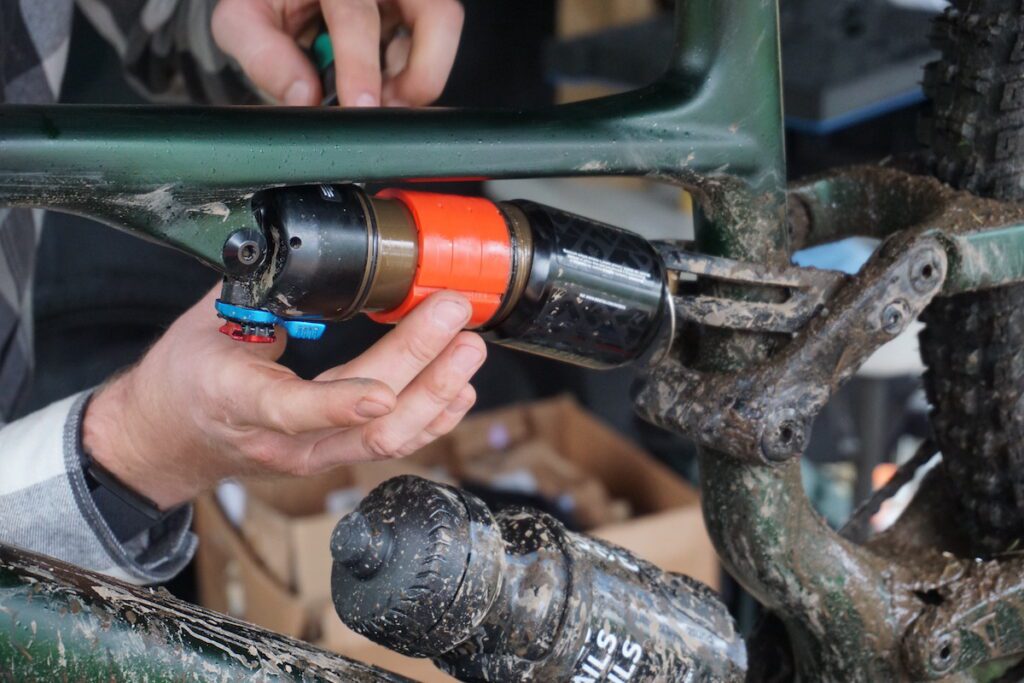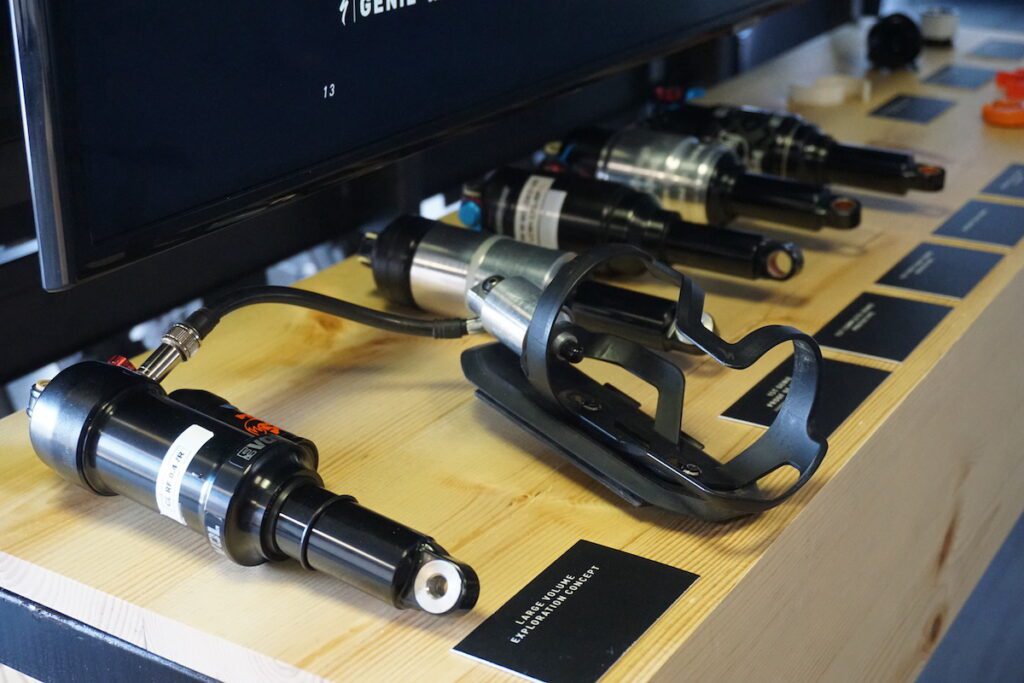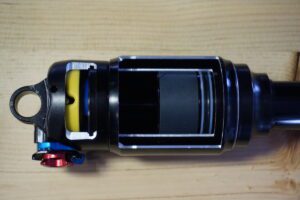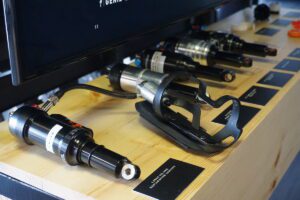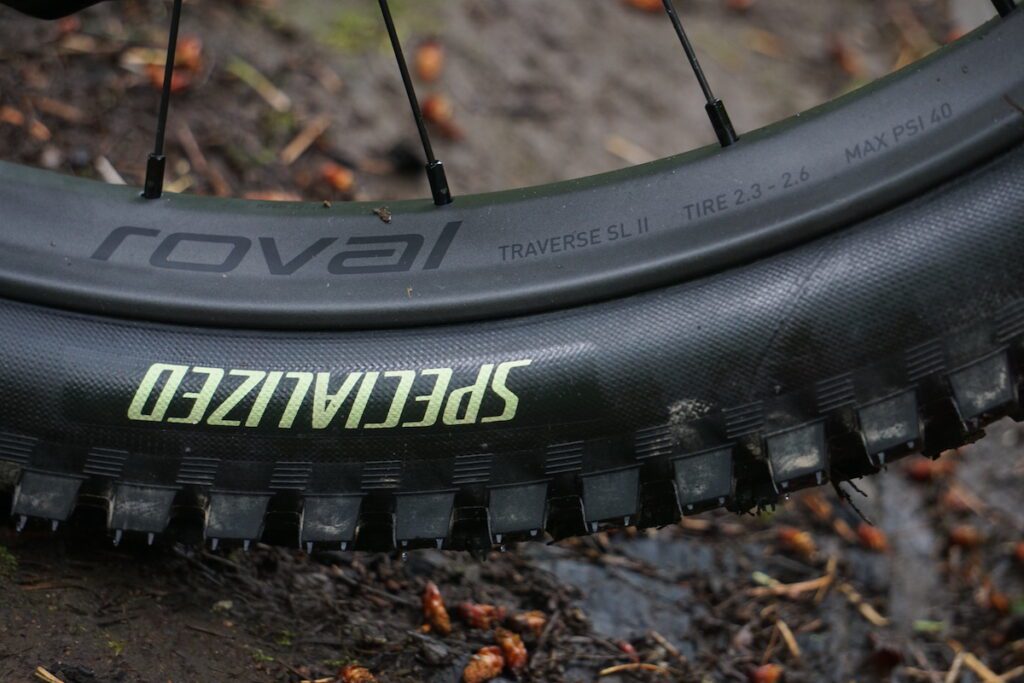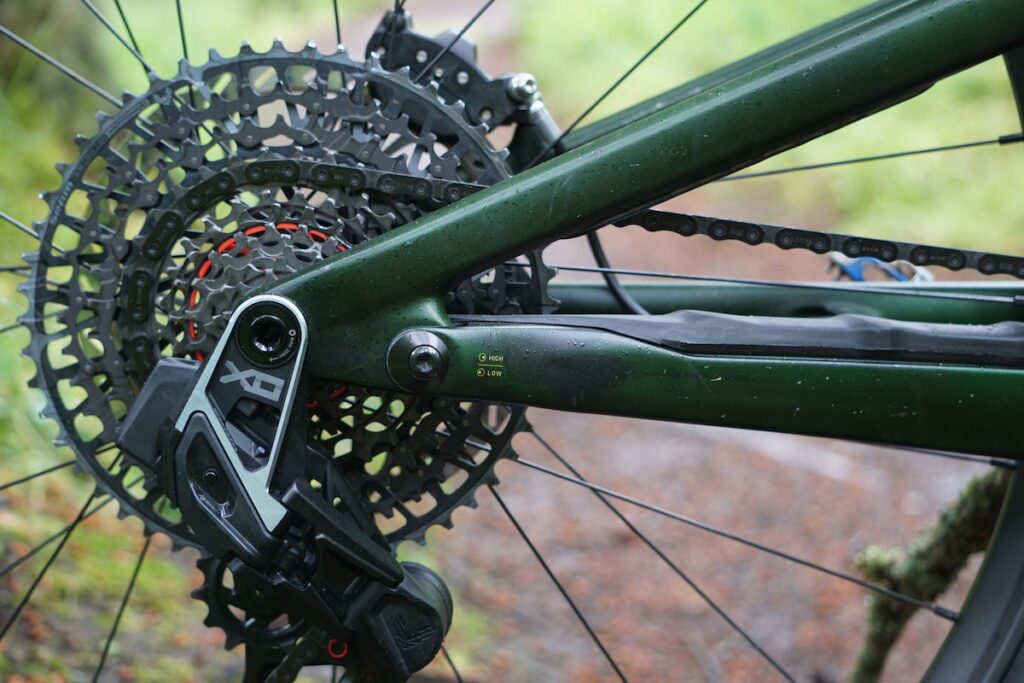First impressions: Specialized Stumpjumper 15 looks into the future
The oldest continuously running name in mountain biking has a few clever new tricks to show off

Specialized is turning 50 this year and, as part of the celebrations, refreshing one of its oldest and longest running bikes. 43 years after it was first released in 2981, the iconic Stumpjumper, the brand’s do-it-all trail bike is back for its 15th generation.
As a brand, Specialized likes to always be doing something new to try push mountain biking forward. While it might not look, at first glance, like the Stumpjumper 15 is a huge change from the exitsting Stumpjumper / Stumpjumper EVO combo, there is actually a whole lot going on here.
We’ll get into all of that, with a different approach. Some details, some ride impressions and then a bit of a deeper dive into the details, explanations and thoughts some of the bigger changes from Specialized that are new for the Stumpjumper or for this year.
Specialzied Stumpjumper 15: What’s new?
This is, as the name suggests, the 15th version of the Stumpjumper. A lot has changed since 1981, from rigid steel frames, rim brakes and 26″ wheels to the current carbon fibre, full-suspension 29″ (The smallest, S1 and S2 sizes come with 27.5″ rear wheels), ripper. The idea of the do-it-all trail bike remains, it just continues to evolve to reflect how trails evolving.
The big change for existing Stumpjumper fans will be that the main model merges with the more agressive EVO model. There’s now just the Stumpjumper. And it looks, well, a lot like the EVO used to. There’s slightly less travel, at 145mm out back with a 150mm fork, but many of the features and much of the intention of the EVO survives into Stumpy 15. That is, in part, because the newer Epic 8 is so close in capabilities to the outgoing Stumpy.
There is also an updated, more streamlines SWAT 4.0 storage compartment, adjustments to the geometry, a re-design of the frame to improve stiffness while also removing the old side bridge. Specialized includes a flip-chip in the chainstay, the option to run mixed, 27.5″/29″ wheels instead of the stock 29″ and, for the carbon fibre models, removes the option to run non-wireless drivetrains.
A very stable Genius
All of that, except removing cable routing, fits in with a major update that is an evolution. Except the shock. Specialized worked with Fox to create an entirely new shock design for the Stumpjumper 15. This is the Genius. The frame will fit a wide range of other shocks, and Specialized is confident it will work just fine with those (one model comes with Öhlins suspension). It is just supposed to work better with the Genius.
The idea behind the Genius is one shock that has the clearance and weight of an in-line shock, or close, and the extra volume, and improved performacne, associated with the external reservoir of a piggy-back shock. But Specialized has a grander vision for the Genius.
The idea is to mix the comfort and traction of a coil spring and improved end-stroke support with an adjustable mid-stroke “platform.” Specialized does this by creating a two-stage spring rate in the Genius. They do that via some clever design. The extra volume chamber is only open during part of the stroke, first. And, second, it is independantly tunable. So when you put tokens in, it doesn’t impact the full shock stroke, just the mid-stroke.
There’s nothing hidden or secret about how all this works. There is no AI, machine learning or electronics. In fact, Specialized was quite eager to open up the shock and show us how it all works. And it’s quite simple, in design, even if the idea is a bit complex.
I’ll get deeper into all of that below. But, first, let’s talk about the important stuff: how the Stumpjumper 15 feels on the trails.
First impressions: Specialized Stumpjumper 15
Before our group was sat down and shown the inner workings of the Genius shock, we had a chance to just get on the Stumpjumper and ride. This worked out well as we had a chance to feel the base tune, which Specialized hopes will work for 95 per cent of riders, before thinking too much about how we could change it.
Getting on the Stumpjumper 15 wasn’t, to start off, an entirely different experience than the Stumpjumper EVO. Which is a good thing. We thought that was a great bike. But the new one felt like it just had a bit more traction. Than the old one and than a lot of other trail bikes out there right now. Even with fresh rain delivering greasy conditions on Mount Tzouhalem, the Stumpy had a way of holding traction, or quickly regaining it. This traction certainly wasn’t coming from the fast-rolling Eliminator rear tire, so it had to be coming from somewhere else. It also wasn’t keeping the Stumpy from comfortably dealing with bigger gaps, or casing some bigger gaps.
In fact, the Stumpjumper was just really easy to have a really good time on. Tzouhalem features a good mix of fast, blue flow, old-school tech with greasy rocks and some bigger lines with jumps and drops to test a trail bike’s ability to deal with speed and jumps at the same time. And plenty of climbing. The Stumpy isn’t a rocket up the climbs. But it has a comfortable riding position and its efficient enough, especially while seated, that another lap almost always seemed like a good idea. The rest of the time, the Stumpjumper was impressively adpet at moving between slow tech, carving speedy corners and hitting some bigger drops.
Based on the ride experience alone, the Stumpjumper 15 is another step forward for the long line of bikes bearing that name. Even if you never open up the shock to find out what’s going on inside, the improved traction without and loss of ability to deal with bigger, faster riding makes the Stumpjumper an impressive bike. It definitely leans more towards the EVO side of the Stumpy lineage, as teh Epic EVO also becomes more capable as well, but a sleeker, improved version of the EVO.
Parts and spec: Specialized Stumpjumper 15 Pro
The parts spec on the Stumpjumper reflects this shift towards the EVO side of the bike, too. In addition to Fox 36 forks and the Genius high-volume shock, relatively expected for this sort of bike, Specialized specs SRAM’s wildly powerful Maven brakes. That’s a lot of power for a trail bike, so the designers clearly have more aggressive riding in mind. It’s arguably too much power, depending how you plan to ride the Stumpjumper, but they certainly slow the bike down whenever you want them to. Bike Yoke’s reliable Revive dropper post adds plenty of room to move the seat around, with long-travel bikes speced on all models.
Drivetrain is, across the entire Stumpjumper line, SRAM AXS T-Type. On our test bikes, that was XO level shifting. The Stumpjumper is currently only available in carbon fibre. And the carbon fibre bikes only work with wireless shifting. So, until someone comes out with an alternative to SRAM, AXS – T-Type or original – is your only option on the Stumpjumper.
All this rolls on new Roval Traverse SL II carbon fibre wheels, wrapped in a combination of Specialized Eliminator rear and Butcher front tires.
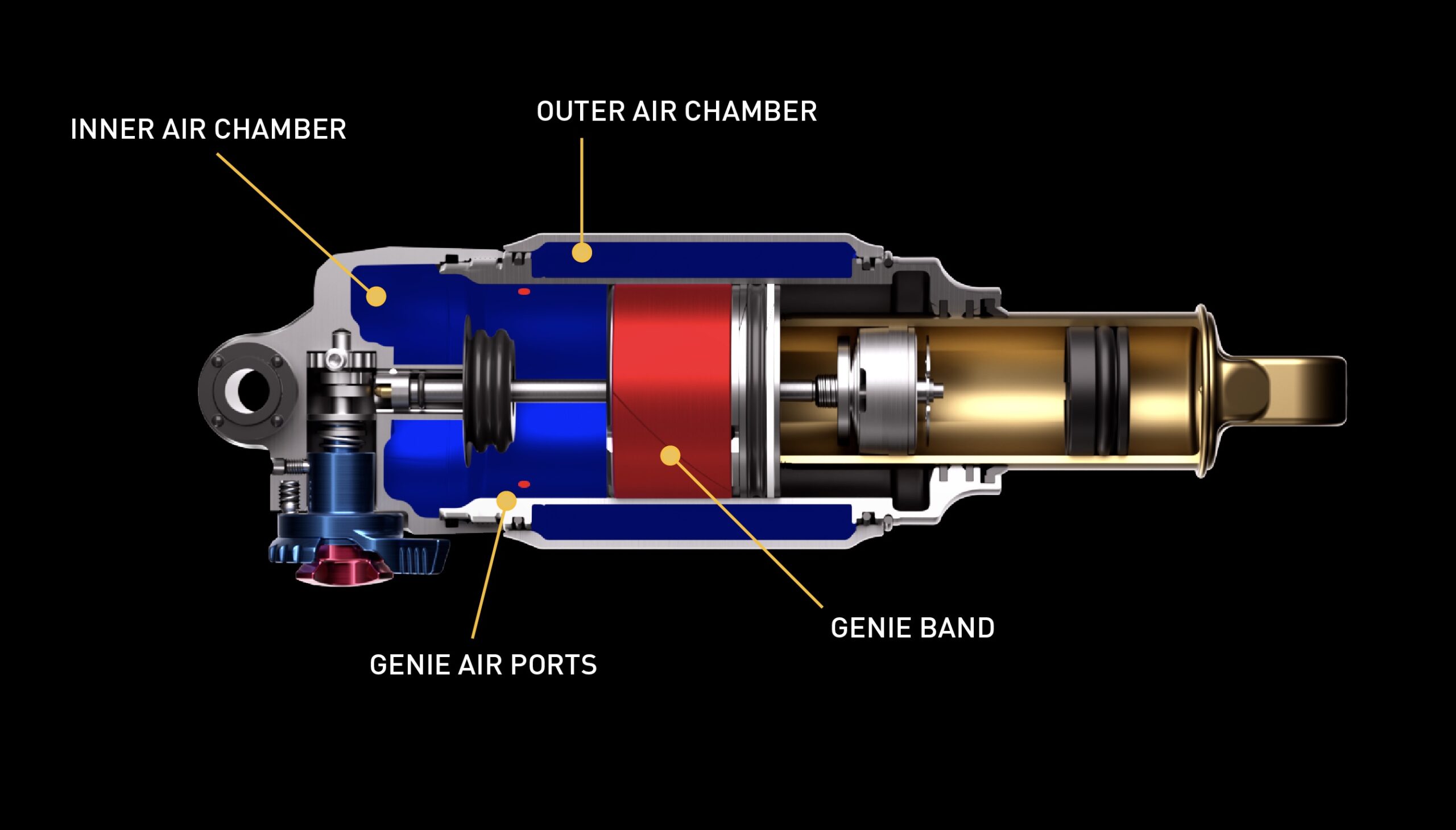
Specialized x Fox Genius shock: The details and ride impressions
Mountain bikers are either excited about new tech or get their back up, with some lingering mistrust of new or different things. But Specialized has a long history of developing interesting shock technology, often with some success. Crucially, Genius doesn’t introduce any new standards. Like the Brain forks that used to come on Epic bikes, it just works differently.
As far as new tech, this is actually quite simple. There’s nothing hidden or secret about how it works. Specialized was quite happy to show off a cross-section showing exactly how the extra volume chamber works.
The idea is a two-stage spring rate. The extra volume outer chamber allows the Genius to be extremely supple in the earlier parts of the travel, where it soaks up the small, chattery bumps and adds grip while climbing. At the shock moves through its travel, the outer chamber is closed off, giving Genius a progressive end stroke that prevents harsh bottom outs.
But, and here’s the twist, Genius gives more control over the middle park of the shock stroke, and just the middle part of the stroke. By adding or removing bands you effectively changing to volume of the outside chamber (and therefor changing how quickly the shock ramps up). That lends the Stumpjumper more support or more progression, or somewhere between. It’s your choice. And it’s reasonably easy to change. Air pressure still controls sag, pedalling platform and overall curve. The end-stroke is separately tunable, if you need more bottom out support. But the volume reducing bands that snap together to fill the external volume chamber only impact the mid-stroke on the Genius.
We were encouraged to experiment with this by running short loops in different settings (number of volume bands). It’s not normally something that you’d want to change on the trail – as getting dirt in the shock would be bad – but it was very helpful to feel what Specialized is trying to get out of the Genius. And it is, well, pretty clever.
Changing the between different outer chamber volumes actually does work how Specialized says it does, and not how I’d expected. For instance, it doesn’t change how the shock feels when climbing seated – the pedalling platform stays unchanged. But it did make a slight difference when climbing standing (when you can get slightly deeper into the travel, especially as you stomp on the pedals at low cadence up grunty pitches). It also didn’t change how the shock felt in near-bottom out scenarios (and I did case a couple gaps in each setting – which we’ll pretend was intentional and in the name of science). I thought the wide-open setting would end up with a harsh bottom in that scenario, but that didn’t end up being the case.

The goal, though, is that the stock shock settings will work for 95 per cent of riders. The new mix of suppleness and progression should, in theory, get rid of the need to add tokens. Tokens, Specialized engineers say, force a compromise. Since they impact how the shock feels throughout its travel, explains Specialized engineeer Jeff Bowers, they found riders were sacreficing small bump performance to get bottom-out prevention.
“Normally you have to tune for that worst-case, bottom out scenario. Because if you don’t, you’ll get hurt (or at least hear that terrible bottom out sound). And you just live with the consequences / sacrifices of that the rest of the time,” Bowers explains. The other option, which he doesn’t mention is to tune for 90 per cent of the ride and just avoid any trails or features that might result in bottoming out. Bowers was on the camp with us and, watching him ride, it’s pretty clear that the idea of avoiding a bigger jump or slowing down rarely crosses his mind while riding.

So, what difference did Genius make?
Well, in what you’d think of as mid-stroke. Pumping for speed or pushing into berms, any time you’re fighting for traction over roots, rocks or in slippery conditions (which we had plenty of). Wide open, or even partially open, it lent the Stumpy impressive traction and control in sketchy situations, but without losing a reasonable pedalling platform or bottom out support. Fill up the outer chamber and the Stumpy lights up on flow trails, with more support to push into, and accelerate out of corners. It’s a much brighter ride feel that suits an attacking style on faster, smoother trails.
What makes this stand out is it doesn’t change the overall personality of the Stumpjumper. It’s both a reasonably big change that is easy to feel and, at the same time, a fine-tuning of how the suspension feels.
It’s also both easy to change and hard enough that you wouldn’t want to do it every other ride. I’d think of it more as a seasonal change – from wet to dry weather riding – or something you’d change if you were travelling to somewhere different, or planning on doing a different style of riding for a while (flow v tech or something like that). But that the Genius allows you to set your “home” settings without changing how the shock feels entirely is a great option to have.
Roval Control SL II wheels
Launching at the same time as Stumpjumper 15 is the new Roval Control SL II wheelset. The carbon fibre hoops use a distinct, wide and shallow rim profile to add comfort to the ride via increased vertical complance. Wide, blunt rim beads help add flat protection while Industry Nine’s 1/1 hubs give the Control SL II lightening-fast engagement. At 1,780 grams for a 29″ wheelset, they’re reasonably light for a tough rim.
I only rode these on the Stumpjumper, but they are also new. They felt good, making the overall feel not too harsh while also not feeling squirmy or flimsy going faster or hitting larger features at speed. A good wheelset improves ride quality then disappears under you. That may sound unglamorous – especially for something that can be quite expensive. But a wheelset should fit the overall feel of of the bike. The Control’s, with their distinctive profile, do just that. They don’t feel harsh, they spin up to speed reasonably, the I9 internals (am I remembering this correctly?) have quick engagement if being loud.
Roval also introduced a tougher, more enduro focused Control SL HD rim. It’s slightly heavier and with a most conventional-looking rim profile. But still just over 1,800 grams.
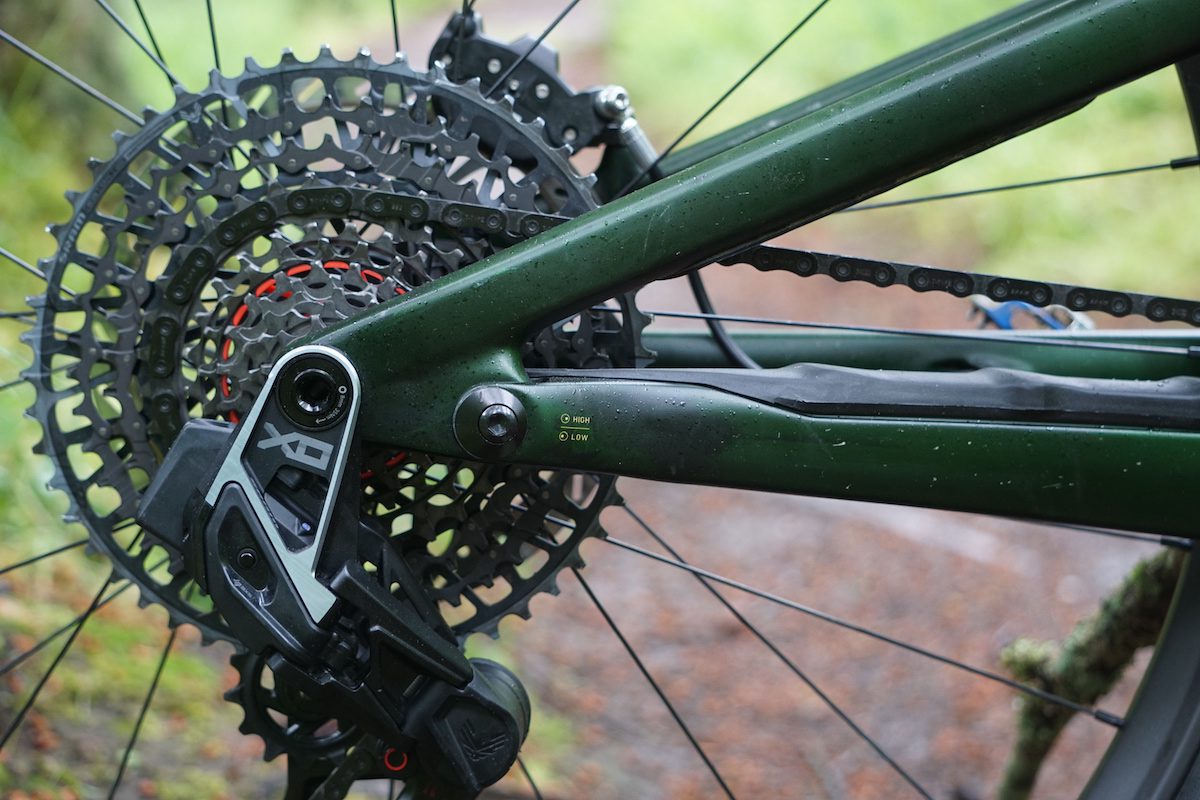
Is the future cable-less?
Wireless shifting is here to stay, sure. But is that the same as saying cable (or electric) shifting has no place on bikes anymore? Specialized seems to think so, as the carbon fibre Stumpjumper’s have no routing for either. There were hints that the bike will be available in other frame materials later and that those bikes could include other drivetrain options, but it’s still not a direction I, personally, am keen on.
Specialized says this decision was made based on feedback from shops and riders. And that they see it as an evolution that’s time has come.
“At some point, bikes had both cantilever posts and disc tabls on them. We just felt like shifting was hitting that point. It was time to change.”
But moving from rim brakes to discs brought a massive improvement in performance. It also significantly freed up frame design, rim design and allowed for wider tires. Moving to wireless shifting, as long as brakes still require hydraulic hoses, brings far less design freedom in the frame. There are still many of us that are not convinced that wireless shifting, T-type or not, is that dramatic an improvement in peformance over the competition. Especially when it current wireless options are still significantly more expensive than cabled alternatives.
Stumpjumper isn’t the first bike to ditch cable routing. The Epic 8 is also wireless only. It’s a big move. It should raise some eyebrows. I’m just not convinced its worth the loss of compatibility to get rid of one cable guide and port.
Adjustable geometry: Make Stumpy your own
Tbe Stumpjumper also comes with a suite of frame adjustments. Head angle is adjustable from 63-degrees to 65.5 via an eccentric headset cup. There’s also a flip chip at the horst link that raises or lowers the bottom bracket by seven milimetres. Combined, that gives six possible settings to set the Stumpy up, covering a wide range of riding styles. These types of options are becoming more common on trail bikes like this. I think they’re great for allowing riders to tailor a bike to suit their personal riding style and trails.
Pricing: Specialized Stumpjumper 15
- S-Works Stumpjumper 15 USD12,000 / CAD 16,000
- S-Works Stumpjumper 15 Frameset USD 3,500 / CAD 4,750
- Stumpjumper 15 Pro USD 9,000 / CAD 12,000
- Stumpjumper Expert USD 6,500 / CAD 8,500
- Stumpjumper 15 Öhlins Coil USD 8,500 / CAD 11,500
- Stumpjumper 15 Comp USD 5,500 / CAD 7,500
The new carbon fibre Specialized Stumpjumper 15 is available now.
